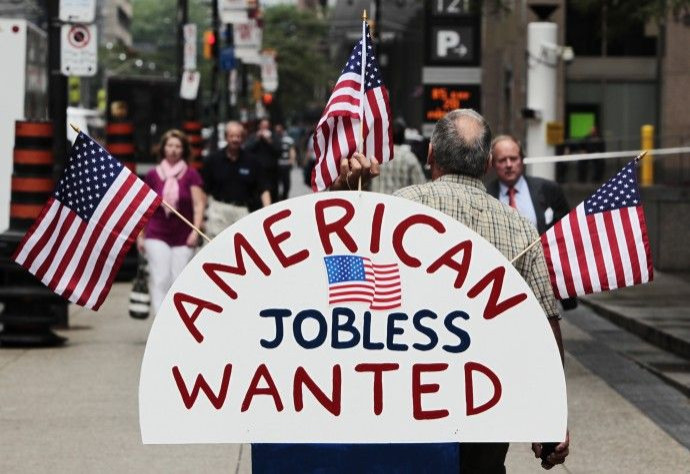Uncertainty Raised Unemployment Rate By Up To 2% Since Recession Began

Uncertainty over future taxes and other government policies has raised unemployment in the U.S. by 1 to 2 percentage points since the start of the financial crisis in 2008, economists at the Federal Reserve Bank of San Francisco estimate.
That's a lot of jobs.
The finding, published in the regional Fed bank's latest Economic Letter, quantifies for the first time the drag that uncertainty has had on the economy since the Great Recession.
"Had there been no increase in uncertainty in the past four years, the unemployment rate would have been closer to 6 percent or 7 percent than to the 8 percent to 9 percent actually registered," wrote San Francisco Fed research advisers Sylvain Leduc and Zheng Liu.
The private sector responds to rising uncertainty by cutting back spending, leading to a rise in unemployment and reductions in both output and inflation.
Given that the jobless rate rarely falls below 5 percent even in good times, their analysis suggests that as much as half of the spike in unemployment since 2008 relates to uncertainty of one kind or another felt by consumers and businesses.
The researchers used a statistical approach to try to quantify the effect of uncertainty. They drew on data going back to 1978, in which a University of Michigan survey has polled respondents each month on whether they expect an “uncertain future” to affect their spending on durable goods such as cars.
“We use the timing difference between the survey and data releases to build what might be thought of as a small statistical laboratory,” the Fed researchers said in the report. “This allows us to measure how, all else equal, an unexpected increase in uncertainty would affect unemployment, inflation and the nominal interest rate.”
They conclude that a spike in economic doubts reduces demand in the near term, such as consumer spending and business investment.
The Fed sent short-term interest rates to zero in December 2008 to counter the deep recession, and it bought trillions of dollars of bonds to further lower long-term interest rates.
But unemployment has remained stuck above 8 percent for three years after the start of recovery. Last week the policy-setting Federal Open Market Committee embarked on a fresh round of bond-buying, saying it will not stop the purchases until it sees substantial improvement in the job market -- hence the markets’ nickname for measure, “QE Infinity.”
The Fed study explained: “Heightened uncertainty acts like a decline in aggregate demand because it depresses economic activity and holds down inflation. Policymakers typically try to counter uncertainty's economic effects by easing the stance of monetary policy. But, in the recent recession and recovery, nominal interest rates have been near zero and couldn't be lowered further. Consequently, uncertainty has reduced economic activity more than in previous recessions.”
The nonpartisan Congressional Budget Office estimates that uncertainty about the so-called “fiscal cliff” -- hundreds of billions of dollars in tax increases and spending cuts set to kick in on Jan. 1 -- alone could reduce U.S. economic growth by 0.5 percent in the second half of the year.
The Fed’s research report isn't an argument in favor of a particular fiscal policy, or against President Barack Obama's re-election.
But it sends a message that it would help the economy if the president and Congress can clarify what will occur at the end of this year. While businesses and consumers don’t think policymakers will actually send the nation “over the cliff” come January, it’s unclear to them what will actually happen and when.
© Copyright IBTimes 2024. All rights reserved.





















